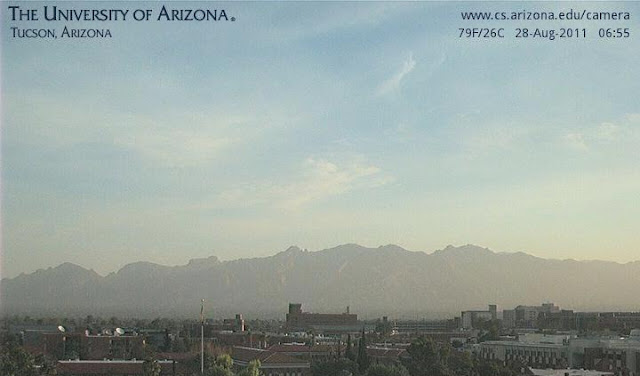Have been having internet problems here at the house this morning - so managed only a quick look at data and forecasts this morning.
-------------------------------------------------------
There were heavy clouds and some very light showers around this morning. Four ALERT stations picked up very light rainfall during the early morning hours. Yesterday afternoon Douglas was hit by a heavy storm that brought 0.69" in less than an hour and gusts to 41 mph.
The Tucson sounding this morning (above) has picked up a bit of PW (see the GPS time series below). The increases have not been at low levels and 850 mb dewpoints across southern Arizona are at their lowest values in many weeks. Looks like at most a sliver of low-elevation CAPE this afternoon. The forecast vertical wind profile for midafternoon has southerly steering flow and light or westerly winds at anvil level. So not a very good situation for low elevations. Some high elevation storms may produce sprinkles and dust and high winds as they try to come into lower elevations - note that storm bases will be at 600 mb or higher!
The Atmo early WRF-GFS run picked up the early showers nicely. The model forecasts an up turn in storm activity today across eastern Pima County. However, the forecast of rainfall through midnight (above) shows little in the way of rain on the ground, except at a few high elevation spots. So August will likely go out with heat, dust, wind, lightning, and rainfall at a few lucky places.


















































